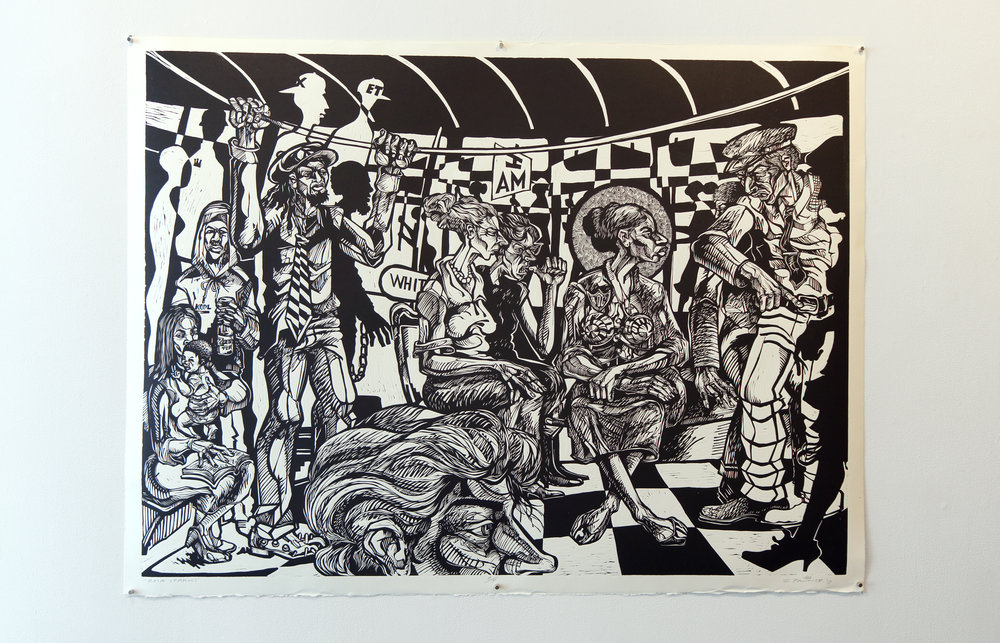I am now going to publicly admit that I like to watch anime, and I refuse to feel embarrassed about it.
I like to watch anime.
Moving on!
One of my favorite anime series is Samurai Champloo, which is set in an alternate version of Japan during its Edo period (roughly 1600-1870). The Edo period “was characterized by economic growth, strict social order, isolationist foreign policies, a stable population, “no more wars”, and popular enjoyment of arts and culture“. Samurai Champloo is interesting because it blends modern culture and references with traditional Edo culture. This combination of the past and present is referenced to in it’s title: “Champloo” (or “Chanpurū”) is a regional stir-fry dish and directly translates to “something mixed”.
Samurai Champloo is highly influenced by contemporary lo-fi hip-hop music, which is incorporated throughout the series and is produced by Nujabes, a Japanese jazz rap/hip hop producer. Beyond its music inspiration (which in itself is a mix of different genres), the series incorporates other aspects of modern Western culture into traditional Eastern culture. For example, there are episodes that revolve around graffiti, baseball, and break-dancing.
Samurai Champloo follows 3 young strangers who embark on a journey and eventually become friends. The story is emotionally driven, and is escalated by mood set by the music and stunning visuals. While the main conflict of the story is slowly resolved, the journey the characters are on is what takes the front seat. The viewers watch as the characters develop, deal with their emotional pasts, and grow closer together. When I finished the series, it felt like I was simultaneously waking up from a dreamy nap and saying goodbye to a friend. As a viewer, I felt as if also I was apart of their journey.
Steve Prince also successfully pulls viewers into being apart of his artwork. Prince aims to make his viewers learn, connect, and share -the viewer’s interaction with the art is integral to their understanding of the work, and Prince himself. Perhaps more importantly, Prince calls for the viewers to reflect upon their interaction with the art and what it says about their character. He layers, or “mixes”, multiple different narratives and themes that he considers meaningful. For example, Prince utilizes a lot of religious imagery and narratives that reflect his religious upbringing. Like Samurai Champloo, Prince’s work has a deep foundation built upon emotion and human connection.
Steve mixes different historical references together into his art, which serves as a commentary on the sustained oppression of black people in America. In his 2017 print “Rosa Sparks”, Prince depicts Rosa Parks in the foreground of the piece, and Trayvon Martin holding an Arizona can in the background. This choice was made to highlight how the inequalities and mistreatment of black Americans are still as present today as they were in the 1950’s.

Steve Prince also utilizes the combination of Eastern and Western cultures into his work. He incorporates references to African culture in some of his work; such as Egyptian pyramids or African-native plants. Prince’s incorporation of African imagery and history into his art, which focuses mainly on American sociopolitical issues, speaks to the relationship between America and African-Americans, as well as his own identity as an African-American man.
As I stated earlier, lo-fi hip-hop music is rooted into Samurai Champloo and produces an ambient mood. Being from New Orleans, Steve Prince also depicts music into his creations; specifically, the unpredictability and duality of jazz. Prince visually portrays musical instruments as well as repeating elements that produce irregular/improvised rhythm found in jazz music. It is also interesting that there is an anime, a form of media rooted in Japanese values and culture, has incorporated hip-hop, a genre of music rooted in African-American culture, into its existence.
The “champloo” and mixing of different elements adds layers to both the series and Prince’s artwork. The juxtaposition of both the past and present highlights the similarities between both time periods. In Samurai Champloo, there are comparisons drawn between the Edo period and modern day – which most noticeably the strong emphasis on art and culture. In Steve Prince’s art, he focuses on how sustainable the treatment of black people in America has been throughout history. Prince often utilizes historical references in his art, as it causes the viewer to contemplate the racial injustices that still exist to this day. Additionally, there is a strong emotional draw and emphasis on the human experience.
I honestly never would have thought of comparing a professional contemporary artist to an anime (like, ever). However, being in this class has taught me a lot about intersectionality and the fluidity of art. The way I think about art has expanded – there are more forms of expression and communication than I ever knew. Art translated and communicated emotion and stories in a completely new way, and helps us better understand and connect with each other.
Both of the subjects I chose are full of dichotomies and anachronistic elements, are emotionally driven, and focus on human experiences. Just as you get to experience the characters of Samurai Champloo gradually grow and develop during their journey, you get to connect with Steve Prince when engaging with his work and experience your own journey of self-reflection.
